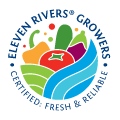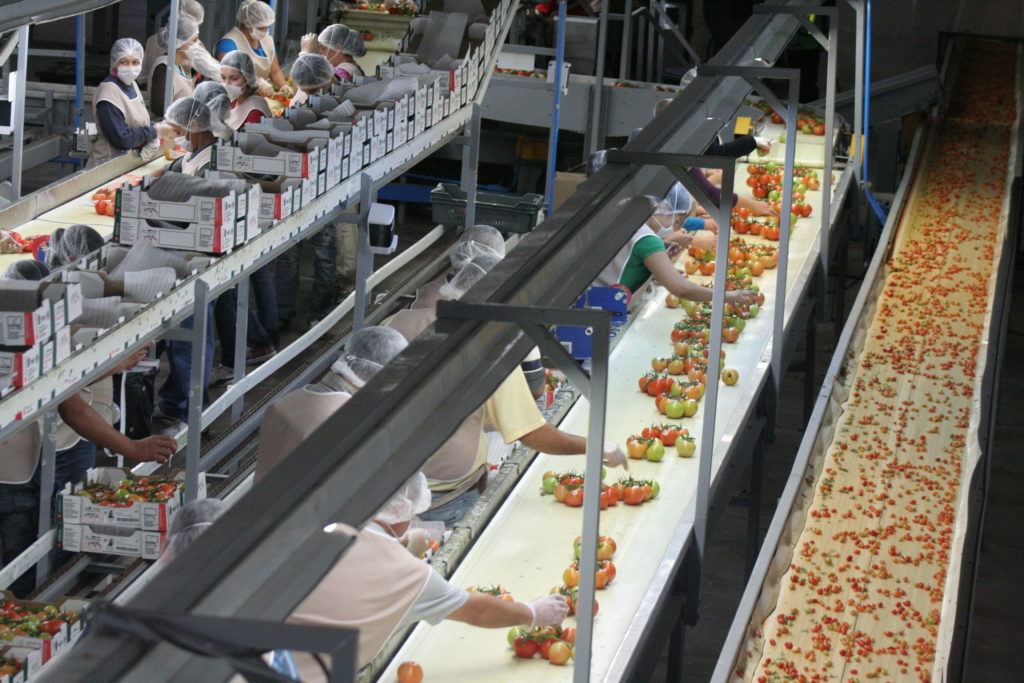Hygiene
3.4.1. Preventive plan and control measures
Documenting and implementing hygiene plan and include a procedure to identify the areas in which cleaning and disinfection actions are performed; describing the frequencies established the personnel responsible for actions and relevant records.
3.4.2. Regulation
Documenting and implementing a general hygiene regulation. Rules must be drafted in a clear and accurate manner; with obligations and prohibitions aimed to prevention. The regulation must include at least the following prohibitions: access of animals of any species to the packaging area, use of cloth or latex gloves, use of jewelry and personal objects at the moment of packaging or handling produce, use of caps, clothes or shoes with accessories, use of nail polish for natural and false nails, prohibition to eat or taste the product before or after it is packed.
The regulation must be visible in strategic areas for compliance of employees, suppliers and visitors.
3.4.3. Entrance and exit from facilities
Implementing main entrance and exit directions, describing the regulations allowing for a better functionality and control. Be compliant with basic hygiene activities for personnel when entering the facilities is mandatory.
3.4.4. Uniforms and personal protection equipment
Personnel in charge of managing agricultural products must maintain, save, wash and use their clothes, preventing pollution risks for products, and workers must be trained in the use of the washing system, based on a previously documented procedure.
The procedure must be applied to working clothes, aprons, coveralls, and coats. Clothes must be changed when dirty and represents a risk for the agricultural product.
Having enough cloth aprons to supply the daily needs of the personnel. The use of aprons with pockets at forbidden.
Aprons, liners and masks must be safe kept in the area destined for it, when personnel are using the bathroom facilities.
When the company regulation specifies the use of gloves, these must be manufactured with nitrile or other plastic material: the use of cloth and latex gloves is forbidden.
Developing and implementing a procedure specifying the methods to save wash and disinfect gloves. When not disposable, these must be stored clean in hygienic shelves and containers.
Disposable gloves and aprons must be changed after every break, when entering the packaging area again and when damaged.
3.4.5. Hand washing
The personnel entering the areas of manipulation and packaging of produce must wash their hands before starting their tasks; before and after using the bathroom facilities and when required, to avoid pollution risks. Personnel must maintain proper hand wash practices, even when using gloves.
3.4.6. Jewelry and personal objects
Verifying that jewels and other loose objects should not be worn or carry to a packaging operation or produce management. Personal objects must be stored in a designated area.
Special attention should be paid to prevent the use of caps, clothing or shoes with accessories that may risk food safety of the packed production. Also, workers should not work with long, dirty, painted or false nails.
3.4.7. Product reception
Workers transporting the production from the field to the packaging facility must apply the policies and regulations related to Good Hygiene Practices implemented by the company. A procedure of cleaning and disinfection in this area must be documented and implemented.
3.4.8. Unloading and emptying
When a product in unloaded from field containers (bins, crates and outriggers) or transportation vehicles, emptying can be either direct (dry) or in water. The use of automated systems for unloading is recommended.
In both cases, employees must comply with Good Hygiene Practices during this stage of the process. A procedure for cleaning and disinfection of this area must be established.
When emptying with water tubs, the company must ensure that there is no difference of internal product temperature and water used higher than 5°C, through measurement and record of temperatures and applying actions in case that there is a significant difference; besides making sure that water quality is compliant with the provisions of the NOM-127-SSA1-1994 regulation. It is necessary to implement a filtering and circulation system to eliminate organic material during this process and maintaining constant water circulation.
3.4.9. Product washing and disinfection
When field production is received and emptied directly (dry) in the packaging lines, the company must install jets to wash and disinfect the production, and pay attentions to the following factors:
-
Water quality. This must comply with the specified in the amendment to the NOM-127-SSA1-1994 regulation.
-
Water temperature. Avoiding a difference between internal product temperature and the water used, when higher than 5°C. The company must have specific measurement tools.
-
Jet management and supervision program. A program must be developed and executed, with methods and frequencies, to corroborate that jets are properly functioning and a preventive and corrective maintenance is applied to them.
3.4.10. Drying process
Verifying that the drying equipment is dust and dirt free and in compliance with maintenance and cleaning of such equipment, in accordance with the maintenance and corrective plans established, as well as those of cleaning and disinfection.
3.4.11. Post-harvest chemical treatments
In case of using chemical post-harvest treatments (waxes, fungicides), these must be authorized based on the C.F.R. legislation.
If using natural or organic waxes and the product is not regulated, the company must be supported with an analysis from an accredited laboratory, and validate that the product is not a risk for consumers health.
3.4.12. Contact surfaces
Documenting and implementing cleaning and disinfection procedures of surfaces and work equipment with C.F.R. approved chemicals, based on the information on labels.
The use of implements in contact with the product that may make washing and disinfection difficult is forbidden, allowing accumulation of dirt and development of microorganisms, e.g., rags, millet brooms or any other item with a handle or wooden handle for cleaning contact surfaces.
3.4.13. Packaging lines
In horticulture product management areas, personnel entrance is conducted through specific accesses areas. Doors for secondary access must remain closed. If required to be opened, they must be opened in a justified manner (that is, in order to remove wastes or receive products, supplies or packaging materials) and must be closed as soon as possible.
In packaging areas, the use of nails and false nails is forbidden.
Both packaging materials and product must be maintained in proper structures or surfaces (non-toxic, easy to clean): these should never be on the floor.
Wastes must be placed in labeled containers and being regularly emptied, to avoid accumulation; products should not be eaten before or after packaging.
The water hoses must be stored or kept in shelves or other structure that avoids contact with the floor.
3.4.14. Labeling
Both label and glue must be manufactured with materials that do not represent a food safety risk of the agricultural product. The personnel in charge of this process must comply with good hygiene practices of the company.
3.4.15. Packaging
The packaging area of carton boxes must be covered, cleaned and protected against natural elements and the entrance of pests.
The machinery used to assemble carton boxes, must be in perfect condition and free of contamination from grease or strange matter.
The company must have a procedure to comply with cleaning operations in these areas, and indicate the frequency and actions performed.
3.4.16. Use of forklifts for storage and transportation load
The company must use skids or electric forklifts in closed areas. If vehicles use gas or diesel, they must be placed in ventilated areas, when the perimeter cover of facilities allows the ventilation of the areas.
Documenting and implementing a procedure considering the cleaning, disinfection and operation rules of skids and forklifts, and integrating it to the preventive maintenance program.
3.4.17. Visitors and suppliers
Visitors, suppliers and contractors must comply with the policies and regulations established by the company.



